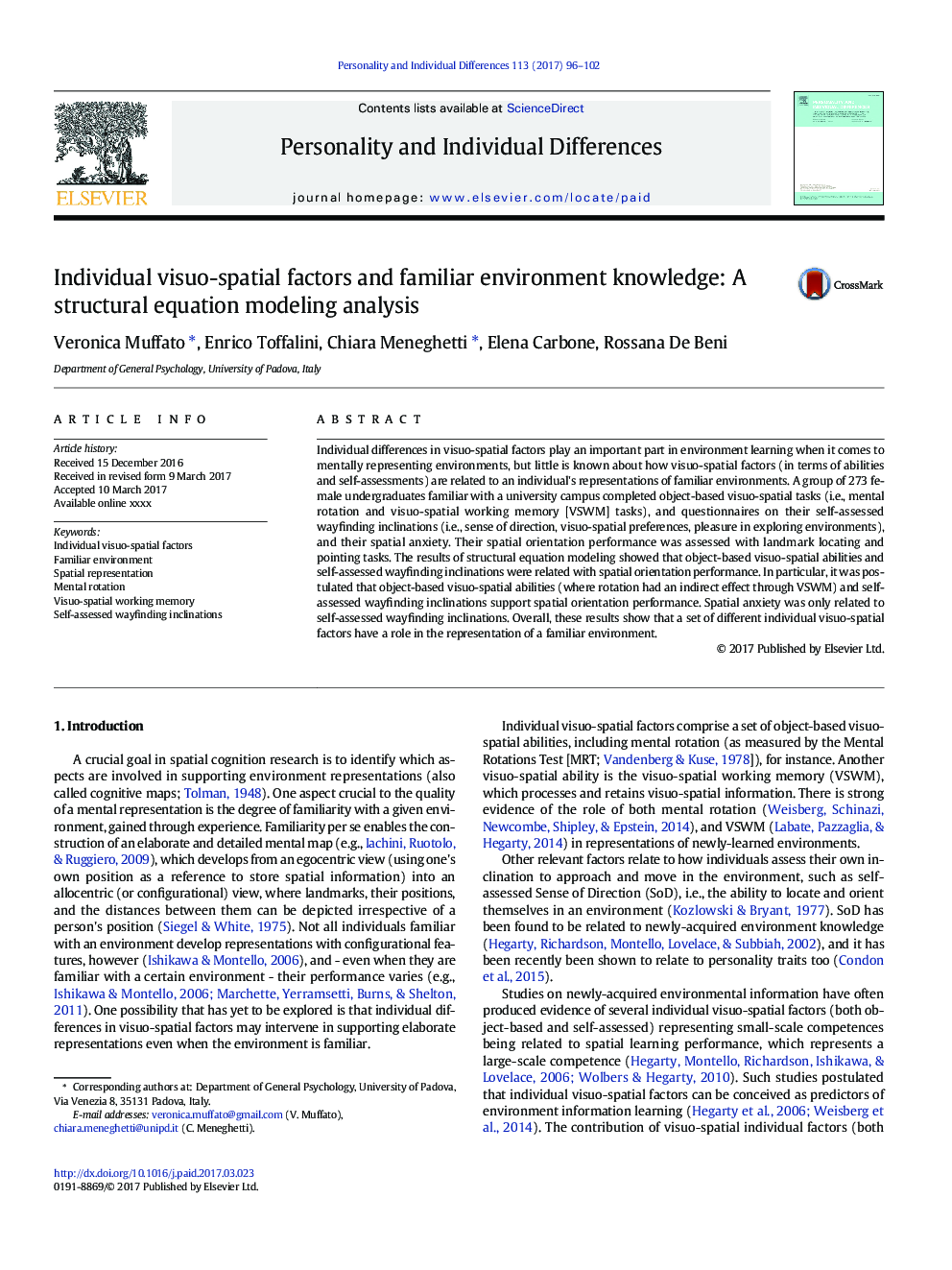| Article ID | Journal | Published Year | Pages | File Type |
|---|---|---|---|---|
| 5035765 | Personality and Individual Differences | 2017 | 7 Pages |
Abstract
Individual differences in visuo-spatial factors play an important part in environment learning when it comes to mentally representing environments, but little is known about how visuo-spatial factors (in terms of abilities and self-assessments) are related to an individual's representations of familiar environments. A group of 273 female undergraduates familiar with a university campus completed object-based visuo-spatial tasks (i.e., mental rotation and visuo-spatial working memory [VSWM] tasks), and questionnaires on their self-assessed wayfinding inclinations (i.e., sense of direction, visuo-spatial preferences, pleasure in exploring environments), and their spatial anxiety. Their spatial orientation performance was assessed with landmark locating and pointing tasks. The results of structural equation modeling showed that object-based visuo-spatial abilities and self-assessed wayfinding inclinations were related with spatial orientation performance. In particular, it was postulated that object-based visuo-spatial abilities (where rotation had an indirect effect through VSWM) and self-assessed wayfinding inclinations support spatial orientation performance. Spatial anxiety was only related to self-assessed wayfinding inclinations. Overall, these results show that a set of different individual visuo-spatial factors have a role in the representation of a familiar environment.
Related Topics
Life Sciences
Neuroscience
Behavioral Neuroscience
Authors
Veronica Muffato, Enrico Toffalini, Chiara Meneghetti, Elena Carbone, Rossana De Beni,
